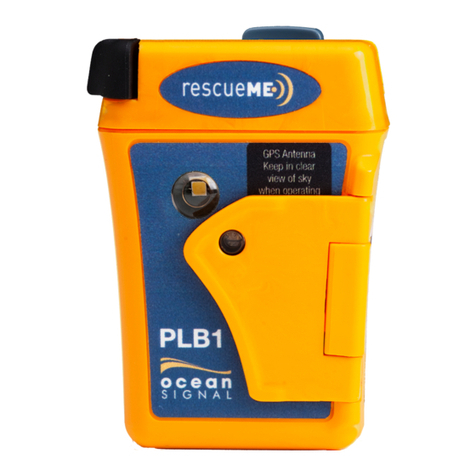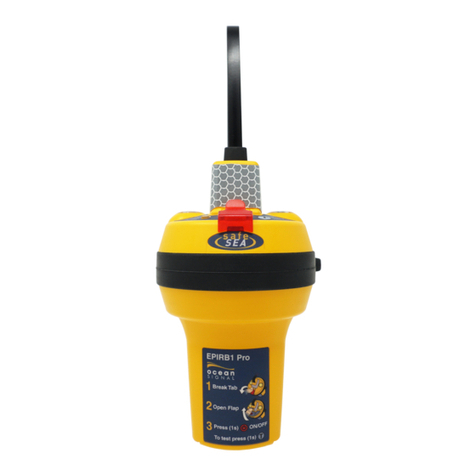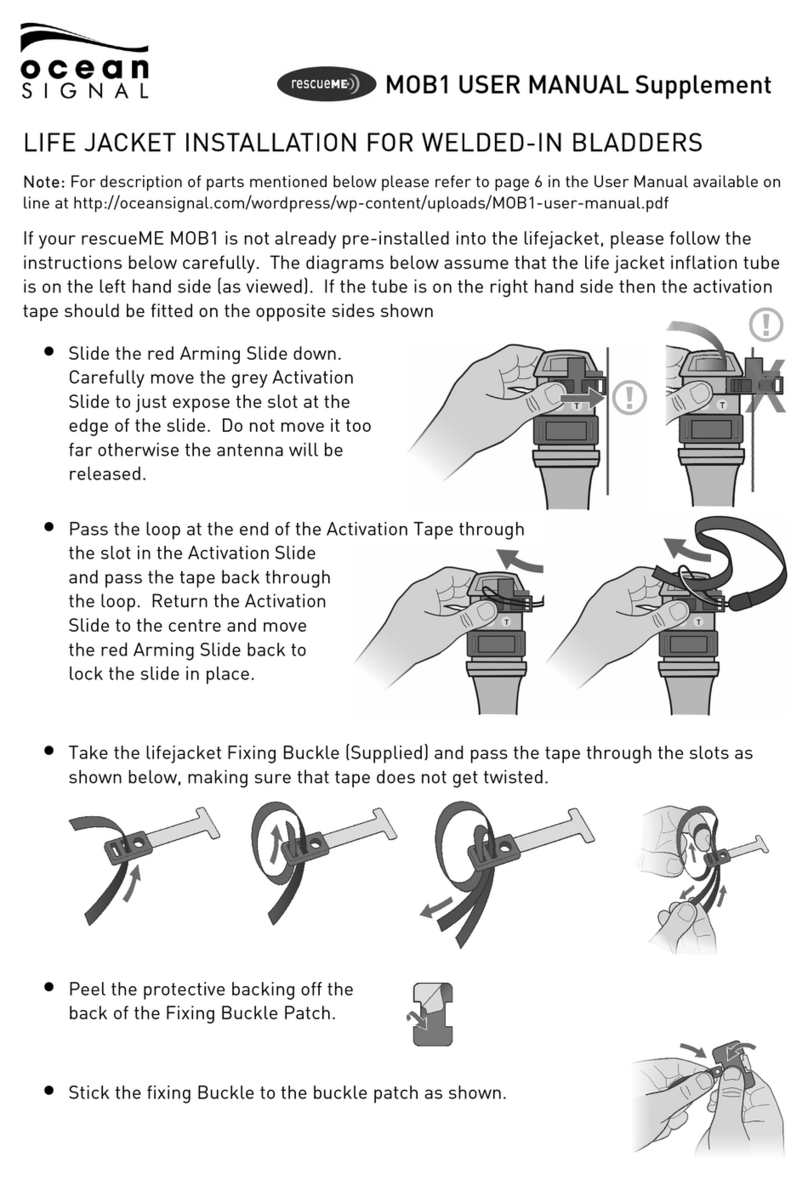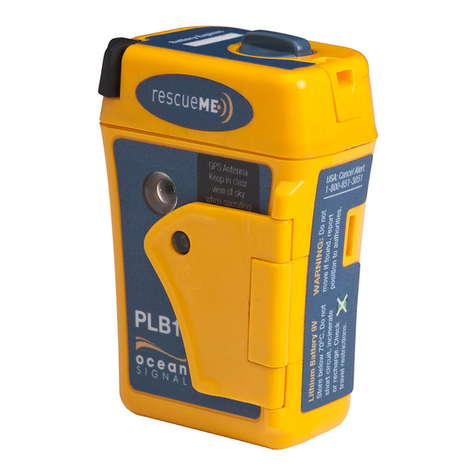
EPIRB1 User Manual
912S-01365 v01.22 5 01/06/23
1. GENERAL
1.1 Introduction
The rescueME range of products provide the user with the latest technology
specifically designed for compact size and ease of operation. The EPIRB1 is an
Emergency Position Indicating Radio Beacon (EPIRB) for manual release only. It is
intended as a carry off EPIRB, but may also be used as a supplementary alerting
device as specified in SOLAS regulations.
1.2 Exposure to RF Electromagnetic Energy
This product complies with EN62479 (EU) at separation distances of 5 mm and 25
mm and with RSS-102 (Canada).
1.3 Warnings
!It is a legal requirement to register your EPIRB with your National
Authority.
!Only use your EPIRB in a situation of grave and imminent danger.
!Deliberately misusing your EPIRB or setting it off accidentally may
result in prosecution and a fine.
!Your EPIRB contains small lithium batteries.
!Please see section 6.3 for information on safe transportation.
!The battery in your EPIRB should be replaced immediately if it has been
activated, or if the test indicator shows the battery as ‘used’, or if the
expiry date marked on the unit has been exceeded.
!The EPIRB1 is supplied with a manual mounting bracket for internal
or protected areas only. See the installation guidelines in section 2 for
further information.
!Please read these instructions carefully. Failure to follow the guidance
in this manual may result in loss of warranty.
1.4 Operating Mode
Your EPIRB1 may be operated in a variety of modes.
1.4.1 Floating in water (a) ! Auto activation in water on Class 2 units only.
This is the preferred method of operation. Ensure the EPIRB is firmly tied to the
life raft or person before deployment.
1.4.2 On deck (b)
When deploying the EPIRB on a deck, ensure it is vertical and clear of obstructions
that might impede a clear view of the sky.
1.4.3 In a safety raft (c)
The EPIRB may be deployed in a life-raft, where it should be held in a vertical posi-
tion so that there is a clear view of the sky, preferably outside of the canopy.
































